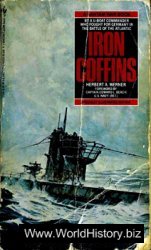The Blackfeet were enemies of the CROW and SIOUX (DAKOTA, LAKOTA, NAKOTA) on the Great Plains; and the SHOSHONE, FLATHEAD, and KOOTENAI in the mountain country to their west. Blackfeet war parties would ride hundreds of miles on raids. A boy going on his first war party was given a silly or derogatory name. But after he had stolen his first horse or killed an enemy, he was given a name to honor him.
Early contacts with non-Indians were friendly. David Thompson, who explored for the Hudson’s Bay Company, wintered among the Blackfeet in 1787—88 and documented that they had had guns, metal tools, and horses for some 50 years. Blackfeet hostility toward non-Indians apparently started when one of their warriors was killed in a horse-stealing raid carried out on the Lewis and Clark Expedition in 1804. The Blackfeet henceforth preyed on American explorers, traders, miners, and settlers who traveled the Oregon and Bozeman Trails. The Blackfeet name, probably more than any other, aroused fear in the mountain men. In 1867, the Blackfeet killed the man after whom the Bozeman Trail, the cutoff from the Oregon Trail, is named—John Bozeman. The Blackfeet stayed on better terms with the British than with the Americans. Canadian traders encouraged Blackfeet warriors to kill American traders to stop their northward advance.
Because they were so warlike, the Blackfeet slowed down the opening of both the Canadian West and the American West. Smallpox epidemics in 1836, 1845, 1857, and 1869—70, along with the decline of the buffalo herds, did more to weaken the Blackfoot Confederacy than Canadian or U. S. armies did. One incident, however, proved especially costly to the Blackfeet. In 1870, U. S. soldiers under the command of Colonel E. M. Baker, who were tracking several warriors for killing a white settler, attacked the Blackfeet winter camp of chiefs Heavy Runner and Red Horn on the Marias River in Montana. They killed 173 men, women, and children and took 140 more Blackfeet prisoner.
The Blackfeet signed their first treaty with the United States in 1855 and ceded additional lands in 1886 and
Blackfeet eagle head, with brass button eyes (worn as a 'headdress for protection from bullets)
1895, and with Canada in 1877. Tribal members were settled on reservations on both sides of the U. S.-Canadian border in the 1880s. The parcels they managed to keep were part of their ancestral homeland.
Crowfoot (Isapo-Muxika) was the most famous principal chief and spokesperson for the Blackfoot Confederacy in the latter part of the 19th century. Although he had lost most of his children to diseases spread to the Blackfeet by non-Indians, he strived to prevent further bloodshed and was instrumental in having his people sign the treaty with Canada in 1877. Just before his death in 1890, he said: “What is life? It is the flash of a firefly in the night. It is the breath of a buffalo in the winter time. It is the little shadow which runs across the grass and loses itself on the sunset.”




 World History
World History









